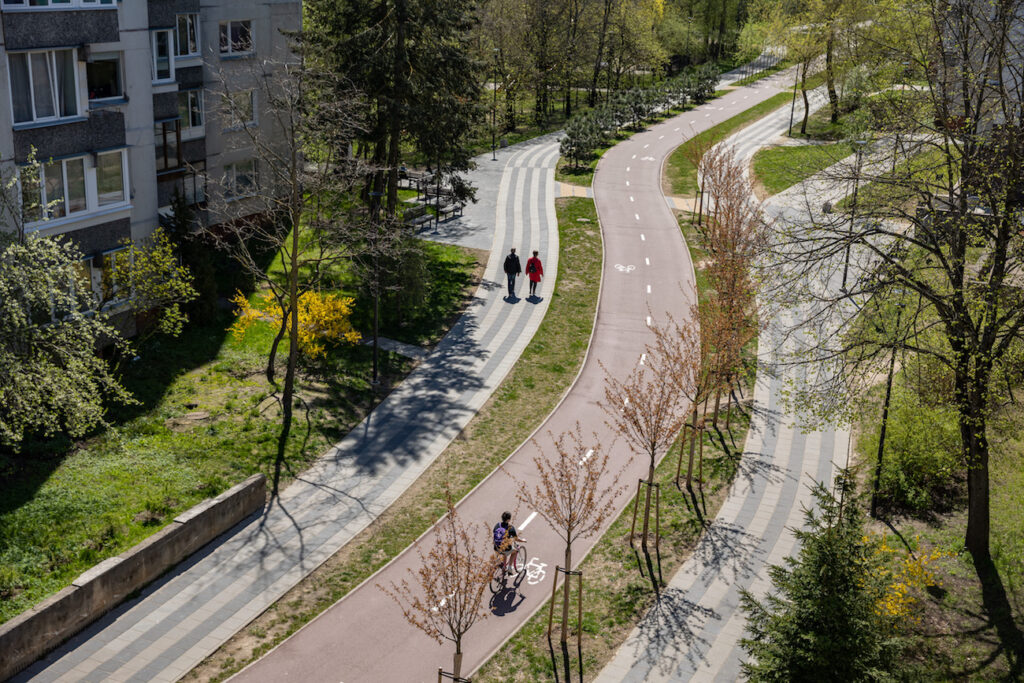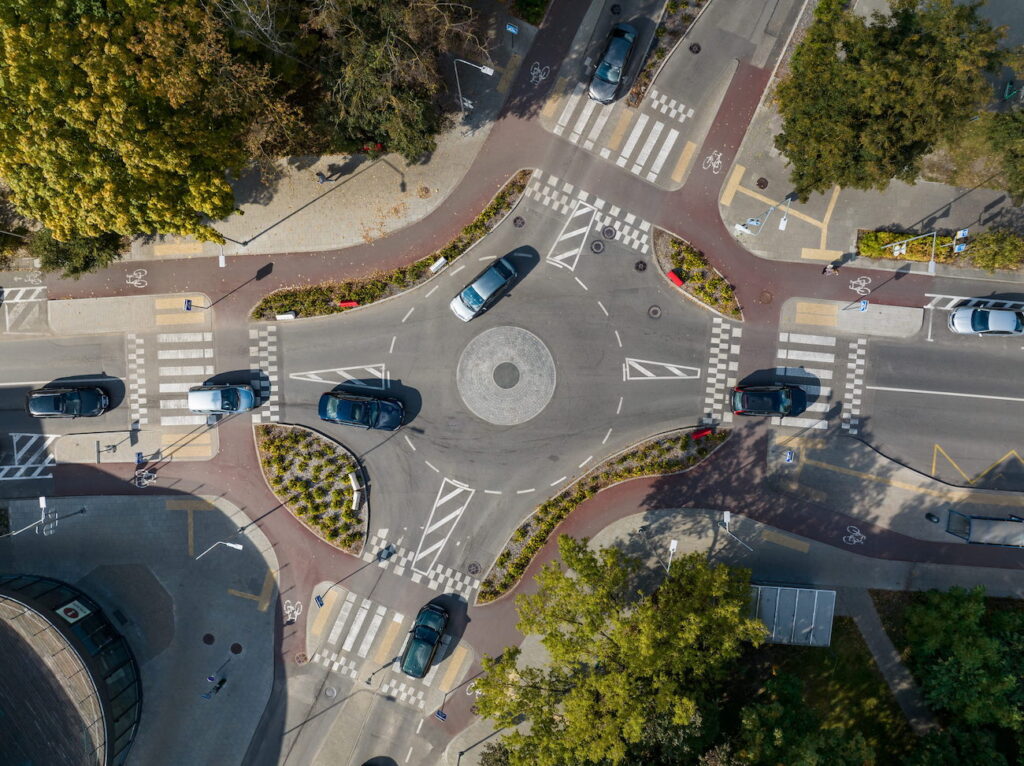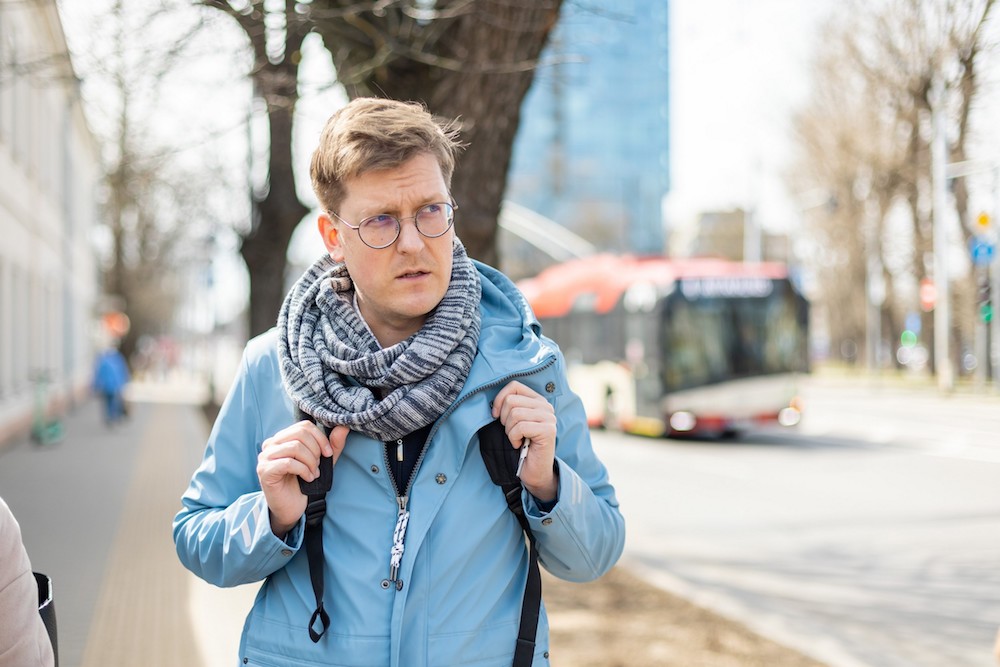In Tallinn, we have had quite a lot of good visions for the future: development plans, studies, and strategies. Yet, we have not acted according to these ideas which has resulted in a different environment than envisioned—especially if we look at our mobility and the quality of public spaces.
Our colleagues in Vilnius have created a simple street manual and it seems that they are successful at implementing it. We gathered Jonas and Anton from Vilnius to find out how they have done it.
Where did the initiative come to make this manual? How did you prevent the document from becoming a paperweight?
Anton: Inspiration for the document came from the need to build better streets. We started working on better street design with the first manuals for cycling infrastructure in 2016, and pedestrian infrastructure in 2017 and 2018 but the earlier versions lacked a holistic approach. It was also pushed by mayor Remigijus Šimašius not to invest public money into just repaving the streets and leaving them unsafe, unattractive, and not suitable for all means of mobility. We were also inspired by the New York street design guide1 from which we took the structure and filled it with Vilnius examples.
However, working together with the creators of the document we managed to develop 12 principles for better streets so that we have a simple and easy-to-understand checklist that meets the main requirements of street design.

What is the bigger goal of the manual and the change it is set to bring? To get more people in Vilnius? The health of citizens? To become better in the competition between cities?
Jonas: I would say it is about all of the above. Vilnius is the fastest-growing city in the region: in the last three years, the population of the capital has grown by 2.7%. In addition, Vilnius is the second youngest city (after Copenhagen) among Nordic European countries. These numbers are a clear indicator that the city will have to increase the efforts in traffic control, as with the rising number of people rises the number of private cars. A younger population also means more potential for sustainable means of mobility. The street manual is a tool for redesigning our streets by making them more appealing for walking, cycling, and quite simply—for living.
Anton: In our view, the street is the main public space of the city, and we need to design those spaces better than we used to. We had a ‘heritage’ of old soviet tradition to design wide carriageways, streets that are just not inviting. Now that we have started building habitable streets, we see that this tradition has begun to change, and we have a more open and European approach to designing streets. Through that, we will also achieve our sustainable mobility goals and better environmental impact, resilience to climate change, and happier citizens in general.

What is the legal position of the street design manual? How does it relate to other standards?
Anton: It is a document that is approved by the Director of City administration. It is a local document that explains our vision and way of designing the streets. In case of contradiction with national legislation, we discuss it and find ways to change it in the future.
I’d say that the document is easily applicable, and people understand it well. Of course, we’re still in the process and there are lots of discussions going on, but they are more on how to do things better rather than if we should do them.
Jonas: In both stages—when issuing conditions for new project proposals or evaluating project proposals, the manual is used in practice. The street design manual has its predecessors.2 These recommendations laid the foundation for the current street design manual. It is important to point out that the street design manual may seem a bit ahead of its time and some state regulations are just catching up to current realities. It is encouraging that both the Ministry of Environment and the Ministry of Transport and Communications support Vilnius’ efforts and see the potential for implementing similar tools throughout Lithuania.
How big is the pressure on traffic capacity? Have car-centrists made peace with this new ideology?
Anton: The main topic of discussion is the width of the lanes which appears as a shock to some people. However, on this, we follow national legislation, as it should have been followed for years now. It is a big change in some cases because carriageways became a bit narrower even though the number of car lanes stays the same. We need to understand that road capacity and road width are very different things.
Jonas: Bigger changes in the traffic situation are yet to be seen as the city implements a number of infrastructural tools to gather data required for precise monitorisation. Next year, the municipality will conduct an important modal split survey which will reflect the current situation in transportation and people’s views towards recent changes. From a personal perspective, I would say there are mixed reviews from society. The biggest issue is probably not the pushback from the residents’ side, but their frustration around lack of communication about ongoing changes.
Anton: We still have urban sprawl challenges which also increase car numbers. However, we do have some good results in carsharing numbers per capita meaning that some of the cars (especially second cars in families) are slowly shifting to sharing. For example, I don’t own a car but use carsharing when I need to.

Does the manual help to relieve the administrative burden? How is the feedback from the designers?
Jonas: Both yes and no. The manual gives designers a concrete framework in which they could work; it also provides examples on how certain infrastructure solutions should be implemented. However, street design has become more complex: fitting more greenery and new bicycle infrastructure where those were almost non-existent, paying attention to elements of small architecture, and the adaptation of the street for people with special needs—all these facets make designers turn their heads harder.
Anton: The workload for the municipality has increased but not because of the design guide. We are aiming for quality, which is why we have a team of different experts involved from the early stages of technical projects. As for the designers, I feel like for some it is still a very new concept, for others—it is common sense, but it helps everyone to make a design better.
Redesigning a street often leads to an abundance of free space as a result. How do you repurpose these spaces?
Anton: We rarely have an abundance of space in the sense of redundancy. On street level, we usually get more parking and greenery, plus cycling. One of our principles is having an ‘owners’ meter’, which can be anywhere between 40 cm and 5 metres—a semi-private/semi-public space to be taken care of by the facade owners—like a front yard which is not very closed. This creates a very different street character and is good for the owners.
How well is the manual and the change it drives received by the private sector—developers, business owners, etc?
Anton: For the most part, everybody understands the ‘why’, discussions are mostly about the details or how exactly the changes should be implemented.
It is a question of perspective and change management. Having our circular plan implemented in the old town to stop car transit there was a big deal for a lot of people, but in the end, the surveys of the businesses showed they did not lose clients and were actually happy with the changes. Previously, there had been businesses who were concerned they would have to close because of the changes. The same was true when we did the cycling lanes on Naugarduko Street.

The street manual defines a space that nudges people towards more sustainable modes of transport. What other kinds of measures are there to drive that shift?
Anton: We have a sustainable urban mobility plan approved. There are a lot of different measures that will be used to enable the shift towards sustainability—from better public transport to soft measures. Infrastructure is only one of them. However, there are still some things that need to be changed on national level (e.g., minimum parking requirement).
Jonas: I could try to name a few measures, which exist in Vilnius: free parking in all zones for electric cars, ‘Park and ride’ -stations, expansion of paid parking zones, and modernisation of public transport.
How is implementation of the manual going? Is public opinion in sync with the ideas?
Anton: I’ll say it’s an ongoing discussion. There are quite some people who are not content with the change and there are quite some that are happy about them. For us, it is important to keep our eyes and minds open and be there to discuss the change. In a way, it is a huge shift in mentality and breaking of the status quo that has been there for several decades. But we see this as natural evolution, and as a learning experience—some things work, some do not, and we are being flexible and quick to correct the things that don’t work out. Truthfully, I feel like there are more and more people who are beginning to see how these changes are actually improving their urban environment, who are and starting to experience the city differently and liking it. So, it is still a process and not the end result.
We have created better and better strategic documents but should now advance to the stage of implementing them. Our decision-makers must find the courage to implement changes that may find some resistance at first but in the long-term are beneficial to all of us. We can follow Vilnius’ example by focusing on long-term goals and adapting our documents along the way.

TÕNIS SAVI is an architect and modal-shifter.

KEVIN VILLEM is an architect and urban planner at the Spatial Design and Planning Department.
HEADER: A new roundabout instead of a wide intersection to make mobility safer and clearer. Naugarduko-Vytenio Streets. Photo: Saulius Ziura
PUBLISHED: Maja 111 (winter 2023) with main topic Street Unrest
1 https://www.nycstreetdesign.info/
2 “Vilnius bicycle transportation projects preparation and implementation recommendations” (2016), “Vilnius pedestrian transportation projects preparation and implementation recommendations” (2018)







